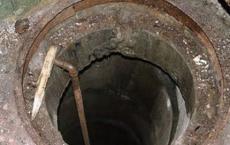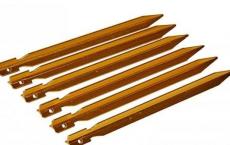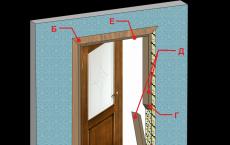Types and graininess of sandpaper or skins: grinding rules
Sanding is one of the basic techniques for working with a wide range of materials. Processing, be it manual or machine, is carried out with abrasive skins. We will tell you about the numerous varieties of sandpaper and the principles of its choice in today's review.
Grits and numbers - how to determine grit
Grain, aka roughness, is a key parameter for any type of sandpaper. Grit is always indicated on the reverse side of the sandpaper after the letter P or the word Grit, sometimes both designations are used at once. Grain is defined by a number from 12 to 15000, sometimes even more.

In the simplest representation, this figure is the number of abrasive particles per square inch, if they are scattered in a continuous uniform layer. In reality, this number is determined by the number of wires per square inch of the sieve through which the abrasive was sieved. The actual particle size ranges from visible to the naked eye (1-1.5 mm) to completely microscopic (whole and tenths of a micron).

Let's define the scope of sandpaper depending on the grain size:
- up to P80 - for rough peeling and grinding in order to level the surface;
- from P100 to P220 - used in the second stage of grinding, if you need to eliminate small grooves and scratches;
- up to P280 - used for fine grinding;
- smaller skins are already classified as polishing.
You can read more about the exact choice of sandpaper for various purposes.
The rule for choosing sandpaper by grain size is very simple - the higher it is, the smoother the surface will be after processing. But at the same time, the finer the sandpaper, the faster it grinds, and the removed layer of material becomes smaller. It should also be taken into account that the greater the hardness of the material being processed, the coarser the paper can be used for finishing. At the same time, on soft wood, even with a grit in P220, quite visible scratches can remain.
Skins by type of base
Even in a small town, walking through hardware stores, you can find several dozen different samples of sandpaper. They will differ not only in grain size, but also in the method of applying the abrasive material, the type of coating and binder, as well as the abrasive material used or a mixture thereof. However, in practice, the type of substrate on which the abrasive is applied is of paramount importance.
The cheapest and most quickly consumed emery cloth is made on a paper basis. It has few advantages: in addition to the low price, the paper is convenient if you need to quickly tear off a fresh shred for work. The abrasive from such a skin crumbles quite quickly, especially in places of fracture, however, the paper base makes it easier to process relief surfaces.
A fabric-based skin has a slightly higher cost, but is much more durable. In many households, half a dozen scraps of cloth sandpaper can be found lying around, which are successfully used from time to time for several years and have not lost their abrasive qualities. It does not do without drawbacks: the fabric impregnated with epoxy is rough, the treated surface is felt worse under it. Also, cloth sanding belts tend to stretch, although this mainly applies to consumables for machining.
Finally, there is a third type of sanding paper - soft-backed. This includes foam or polyurethane skin, used for finishing embossed wood and plaster parts, and fiber sanding paper. The latter, although it has similar properties as a pressure to the part, is used for fastening to the working body with Velcro, for example, to rotary grinders.
Dry and wet sanding
Depending on the abrasive material and its binder, sandpaper may differ in the admissibility of grinding with surface wetting. In addition to the fact that wet sanding paper is more expensive than normal paper, there are a number of other reasons why this distinction is important.
When removing particles from the treated surface, the friction forces at certain points can be so high that the generated temperature is sufficient to sinter the metal dust. This, in particular, is true for aluminum and most non-ferrous metals: if the skin is not periodically shaken off, it will quickly become clogged and become unusable.
In some varieties of paper, this problem is solved by a special abrasive material. So, silicon carbide, especially applied by electrostatics, is able to crumble, forming new cutting edges, so this paper practically does not clog. However, there can be a lot of particles of removed material, for example, when processing plastic, and then it is necessary to prevent their sticking by moistening the sandpaper with water.
Polishing of natural stone, marble or concrete is also not complete without the use of water or special compounds. Wetting improves the quality of grinding and prevents the spread of stone dust
Wetting resistance is determined by the standard, which is indicated at the end of the marking on the back. Paper according to GOST 13344-79 allows work in a humid environment, but according to GOST 6456-82 it does not. There are exceptions, because water resistance is generally determined by the type of binder, that is, glue. Although the type of binder is usually not specified, abrasives bonded with synthetic materials such as bituminous, polyester resins, phenolic varnishes, etc. are suitable for wet processing. Very often, the possibility of using paper for wet work is additionally indicated by the letter "B" or the word Waterproof.
For manual processing
Often a home craftsman has to process their products manually. So the quality of grinding is much higher, there are fewer untreated areas. For manual processing, paper is available in sheets, strips and rolls.
The running types of grit in the economy are tissue paper P60, P80 and P120. Smaller skins usually have a paper base. It is recommended to always keep in stock different numbers of abrasive paper for fine grinding up to P400.
Cloth-based skins above P300 grit are produced mainly for machine processing, although they can be worked with alternate success by hand. The main difficulty is that the abrasive is filled with a solid layer of binder, and manual processing of such a tape is extremely slow, especially at high grain sizes. However, wet grinding with such paper is a pleasure.
Also, for manual processing, polyurethane grinding sponges will be very useful, which are very convenient for processing parts with small relief. If you are fond of woodworking, always have a supply of foam rubber skins, this is the most effective tool for preparing for painting or varnishing.
Belts and discs for machine grinding
When buying consumables for grinders, it is difficult to make a mistake. All of them have a specific type and working dimensions - either length and width, or dimensional number, or diameter.
For belt sanders and grinders, cloth-based paper rolled into a ring is used. The length and width in millimeters is the main parameter of such sandpaper, which determines suitability for use with a particular tool.

While you can still play around with the width by using a narrower band or tearing off the excess, then bands of arbitrary length can only be used on grinders with adjustable tension. Also note that only one direction of movement is valid for the ring belt, indicated by the arrow on the back.
With abrasive paper for rotary and delta sanders, it's even easier. They either fit the size or they don't - the size of suitable consumables is clearly indicated in the instructions for the equipment. When choosing, you should also pay attention to the position of the dust extraction holes. Since we are talking about a power tool, almost all sandpaper in consumables is designed for dry grinding. It remains only to choose the right grain size according to the type of material and the desired surface quality, and then gradually reduce it during processing.



